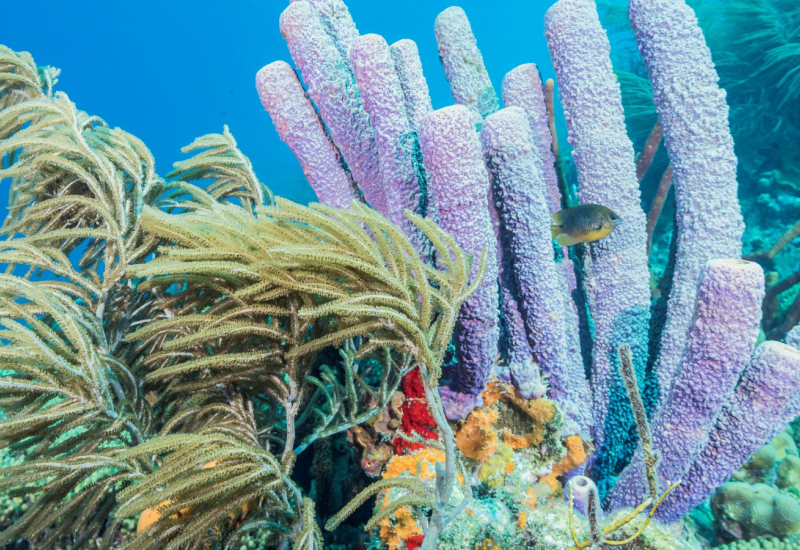Top 100 Destination: Maui Diving
For divers, the islands of Hawaii are unique in the Pacific Ocean because the volcanic archipelago offers dramatic underwater topography like no other island chain in the region.
It’s no wonder, then, that Hawaii ranked No. 1 in our Top 100 Readers Choice awards for Best Overall Dive Destination. And of the eight sister islands, none offers the variety of underwater experience Maui does, which garnered top-five merits for its shore diving, wall diving, beginner diving, visibility and underwater photography. From the lava tube caverns of Lanai to the pinnacles and arches of south Maui, the submerged architecture of Maui County is worth the trip, not to mention the secret manta cleaning stations, host of endemic species, world-class shore diving and World War II-era aircraft.
For decades this amazing combination has inspired divers to visit, and motivated our readers to cast their votes for Maui in a variety of categories since the Top 100 survey began.
Water Sports for All
The Hawaiian islands as a group were voted the No. 1 Best Overall Dive Destination, a category that takes in every aspect of a destination. What does Maui offer besides diving? No matter what sort of aquatic adventure you crave, Maui has you covered. This waterman’s playground offers world-class surfing, wind surfing, kiteboarding, spearfishing, snorkeling, cliff jumping, waterfall-pool frolicking and more. If your goal is to stay wet for your entire vacation and pump as much adrenaline through your veins as possible, book a fight immediately.
Lanai’s Cathedrals
Maui’s best dive sites are technically on the neighboring island of Lanai. Along with Sharkfin Rock, Barge Harbor and Lighthouse, Lanai’s signature sites are a pair of lava-tube caverns called First and Second Cathedral. Architectural volcanic structures form a winding labyrinth with stunning skylights that stream sunlight into the dark rooms with dramatic effect.
A strong south swell can make the sites undivable with dangerous surge, but when conditions align, both sites are world class — especially when one of the island’s resident monk seals decides to rocket through the cavern unannounced. Maui notched one of the Top Five spots for underwater photography in the North America and USA region, and the Cathedrals are two reasons why — they’re tailor-made for creating atmospheric photos.
Haleakala Crater
Watching the sunrise erupt into the rust-colored crater of Haleakala is an otherworldly experience that is not to be missed. The dormant volcano is a national park that offers stunning views of the Valley Island during the day too. (At an elevation higher than 10,000 feet, this adventure is best scheduled at the beginning of your Maui scuba mission, or at least 24 hours after diving.)
Mala Wharf
The remnants of the ruined Lahaina Pier, destroyed in 1992 by Hurricane Iniki, have created one of Maui’s best shore dives. With heaps of hiding spots for cool macro critters and napping green sea turtles, the train of coral-encrusted rubble is a local favorite thanks to prolific marine life and cool swim-throughs. Some dive-boat operators offer this spot as a night dive, which can be very exciting with hunting conger eels, octopuses and whitetip sharks. (Attempting the sketchy shore entry in darkness is ill-advised.) Readers listed a host of west-coast shore dives — from La Perouse Bay and Makena Landing in the south to Black Rock in the north — in voting the Valley Isle No. 1 in shore diving in its region.
Carthaginian II Wreck
The Carthaginian II was built in 1920 as a bulk carrier and sailed the Baltic Sea until 1973, when it was converted into a replica of a 19th-century whaling-supply vessel. The brig became a floating museum showcasing Maui’s whaling history, until it was scuttled in 2005 just south of Lahaina on the west side of Maui. Today, the steel-hulled fish magnet sits upright on the bottom in 95 feet of water, complete with a crew of resident frogfish that like to roost on them.
Heavenly Hana
Isolated on the wild east side of Maui by a winding two-lane road with more than 600 hairpin turns, the sleepy village of Hana is one of the most undisturbed havens on the island. Not a destination for diving, it’s the perfect place to of-gas by hiking to a hidden waterfall through a forest of bamboo, swimming in the Seven Sacred Pools of O’heo, and lazing on black-, green-, and red-sand beaches.
Molokini Back Wall
Molokini Crater is a geologic treasure, a picturesque submerged caldera filled with coral reefs that are a shallow, sunny haven for new divers. But our savvy readers know the real action is found around the backside of the 160-foot cliff, where a wall of volcanic rock drops more than 360 feet into the deep. Maui ranked in the top three of our Top 100 Readers Choice awards for best wall diving, no doubt in part because of this outstanding dive site. This advanced drift dive tours a vertical tapestry of cracks, caves and overhangs where octopuses, spiny lobsters and nudibranchs hide, along with whitetip sharks. But the main attraction is the chance to spot exotic passers-by, including manta rays, black-tip sharks, schooling jacks and the rare whale shark.
Endemic Fish life
This is the place for padding your fish life-list: Roughly one-quarter of the islands’ reef fish are found nowhere else on Earth, including Potter’s angelfish, milletseed butterflyfish and Hawaiian longfin anthias.
Humpback Whales
North Pacific humpback whales make their annual migration from Alaska to Hawaii each winter, and whale watching is especially good in the channels surrounding Maui. You might encounter a humpback during a dive, but it’s more likely you’ll only hear the haunting songs of these magnificent animals.
Need to Know:

When to Go: Maui diving is great year-round. Humpback whale season, when divers enjoy ever-present underwater whale song, is November through March. Water temperatures range from the mid-70s in winter to the low 80s in summer.
Travel Tip: To experience the best of Maui, it’s essential to have a personal rental car. An SUV with high ground clearance is an excellent resource to open some very interesting doors (namely, isolated shore diving).
Dive Conditions: Visibility can reach beyond 100 feet, but it also can be diminished by weather and tides at certain spots.
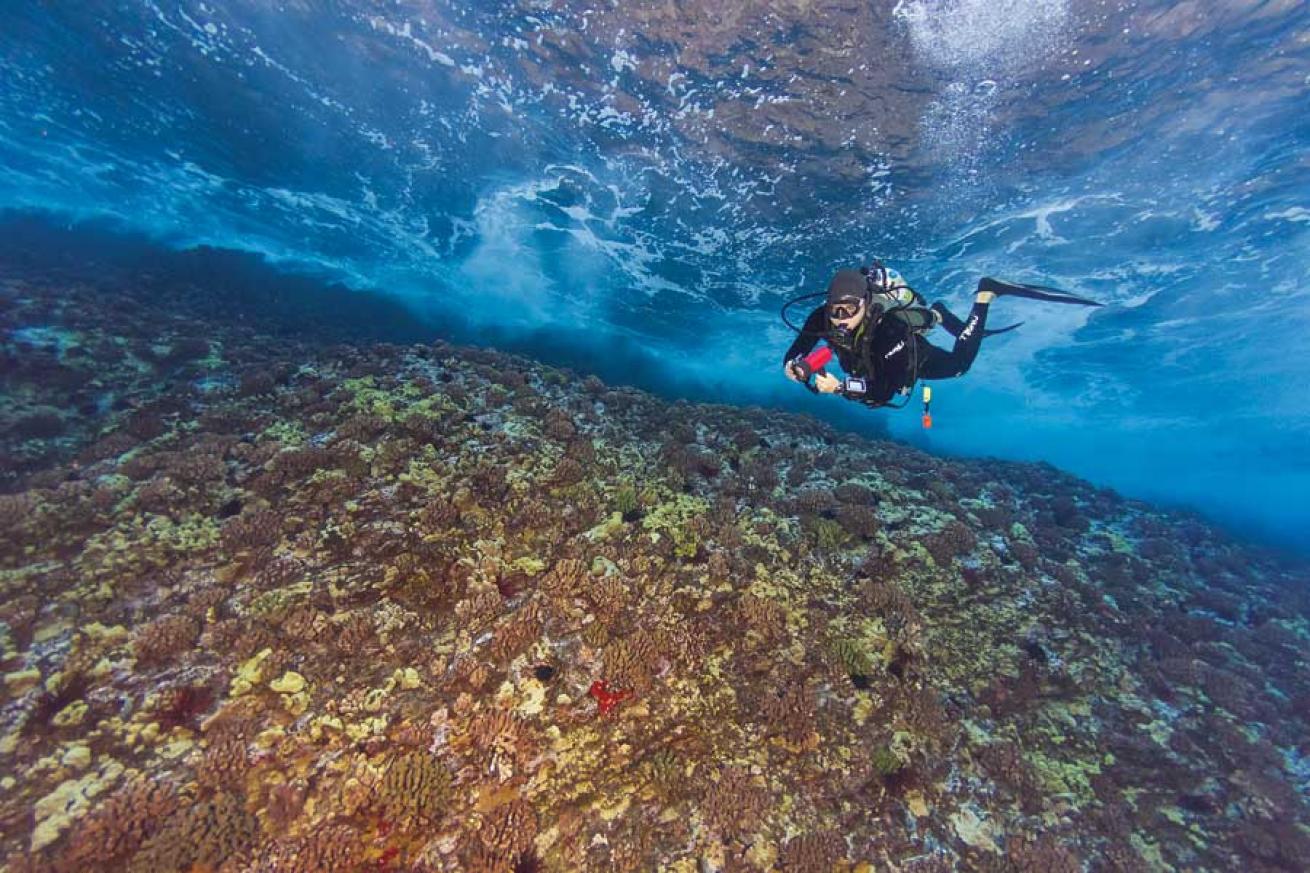
Masa UshiodaThe author glides up Molokini's Back Wall.
For divers, the islands of Hawaii are unique in the Pacific Ocean because the volcanic archipelago offers dramatic underwater topography like no other island chain in the region.
It’s no wonder, then, that Hawaii ranked No. 1 in our Top 100 Readers Choice awards for Best Overall Dive Destination. And of the eight sister islands, none offers the variety of underwater experience Maui does, which garnered top-five merits for its shore diving, wall diving, beginner diving, visibility and underwater photography. From the lava tube caverns of Lanai to the pinnacles and arches of south Maui, the submerged architecture of Maui County is worth the trip, not to mention the secret manta cleaning stations, host of endemic species, world-class shore diving and World War II-era aircraft.
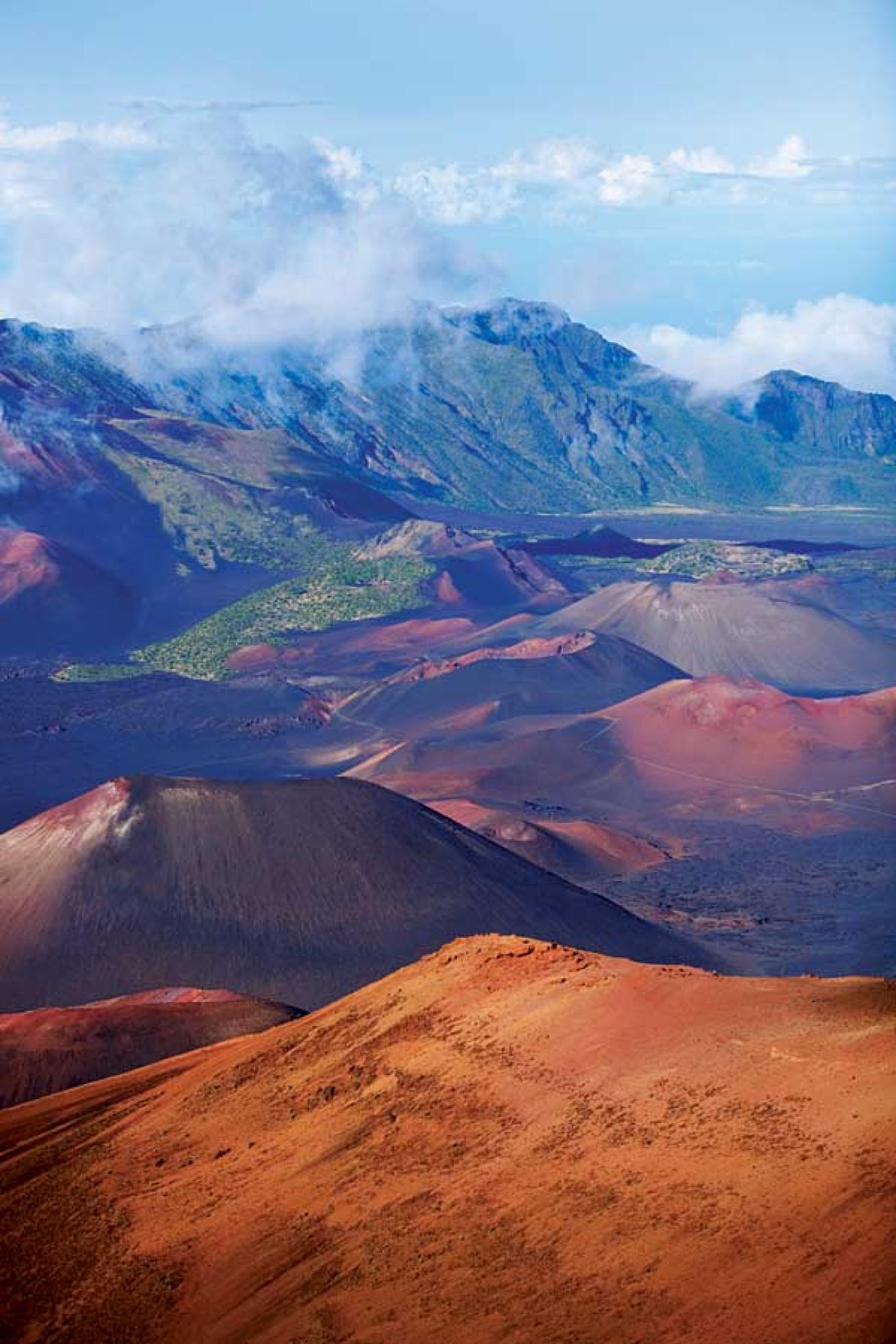
Ron Dahlquist/Pacific StockHaleakala Crater is an otherworldly topside attraction in Maui.
For decades this amazing combination has inspired divers to visit, and motivated our readers to cast their votes for Maui in a variety of categories since the Top 100 survey began.
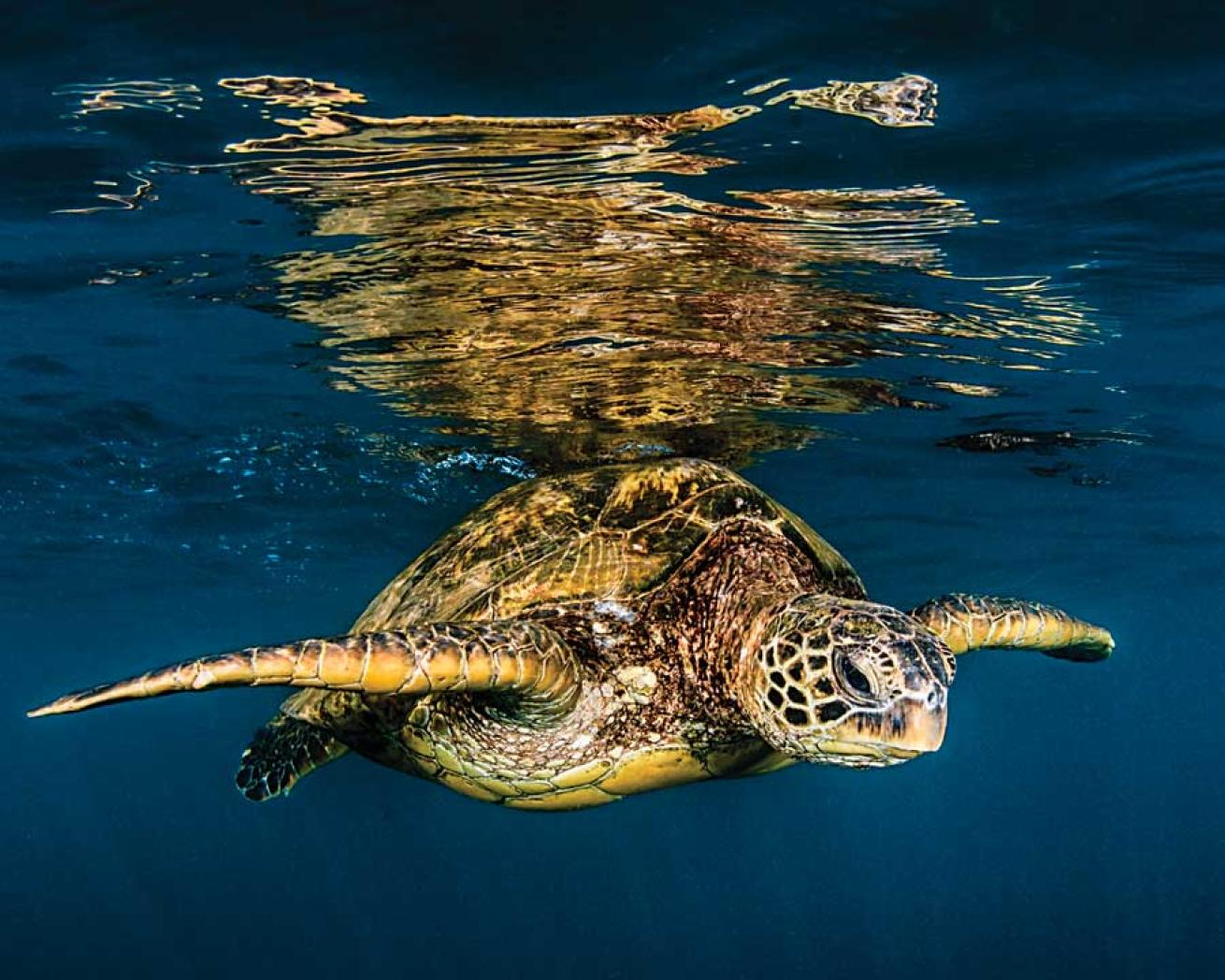
Ed RobinsonWhile in Maui, green sea turtles will often greet you underwater.
Water Sports for All
The Hawaiian islands as a group were voted the No. 1 Best Overall Dive Destination, a category that takes in every aspect of a destination. What does Maui offer besides diving? No matter what sort of aquatic adventure you crave, Maui has you covered. This waterman’s playground offers world-class surfing, wind surfing, kiteboarding, spearfishing, snorkeling, cliff jumping, waterfall-pool frolicking and more. If your goal is to stay wet for your entire vacation and pump as much adrenaline through your veins as possible, book a fight immediately.
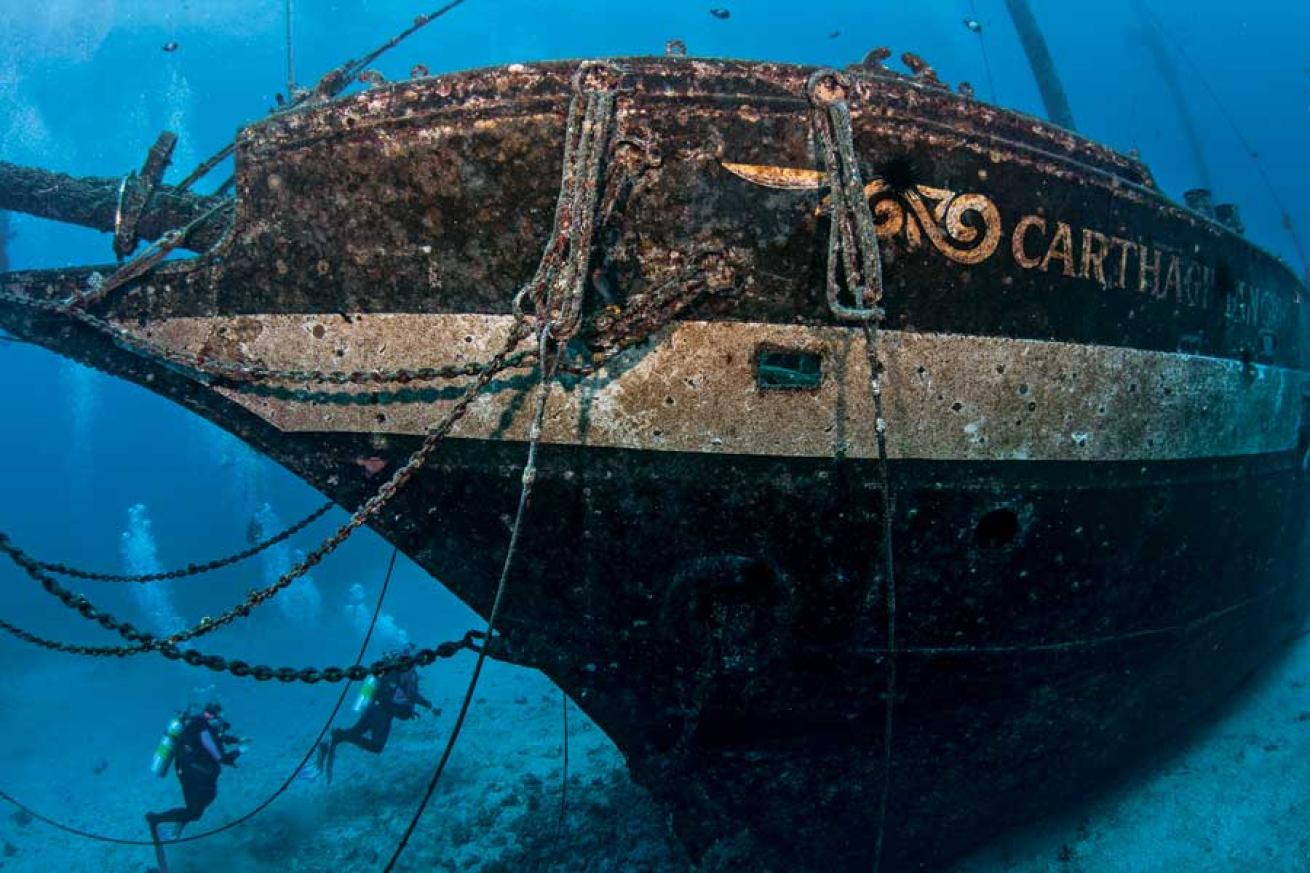
Lea LeeThe Carthaginian II wreck in Maui was once a floating museum showcasing the island's whaling history.
Lanai’s Cathedrals
Maui’s best dive sites are technically on the neighboring island of Lanai. Along with Sharkfin Rock, Barge Harbor and Lighthouse, Lanai’s signature sites are a pair of lava-tube caverns called First and Second Cathedral. Architectural volcanic structures form a winding labyrinth with stunning skylights that stream sunlight into the dark rooms with dramatic effect.
A strong south swell can make the sites undivable with dangerous surge, but when conditions align, both sites are world class — especially when one of the island’s resident monk seals decides to rocket through the cavern unannounced. Maui notched one of the Top Five spots for underwater photography in the North America and USA region, and the Cathedrals are two reasons why — they’re tailor-made for creating atmospheric photos.
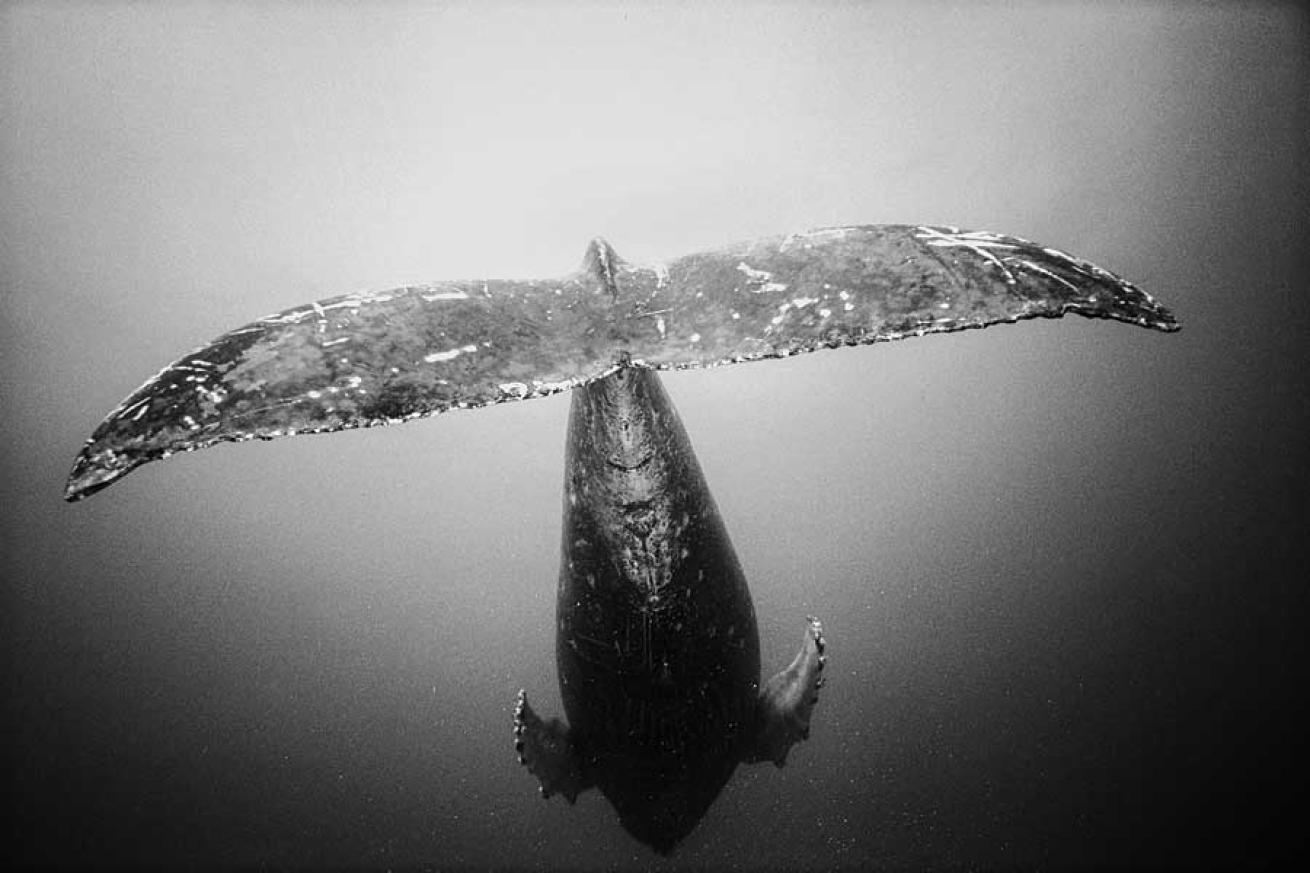
Ed RobinsonWhile diving underwater in Maui, the song of humpback whales permeates the ocean.
Haleakala Crater
Watching the sunrise erupt into the rust-colored crater of Haleakala is an otherworldly experience that is not to be missed. The dormant volcano is a national park that offers stunning views of the Valley Island during the day too. (At an elevation higher than 10,000 feet, this adventure is best scheduled at the beginning of your Maui scuba mission, or at least 24 hours after diving.)
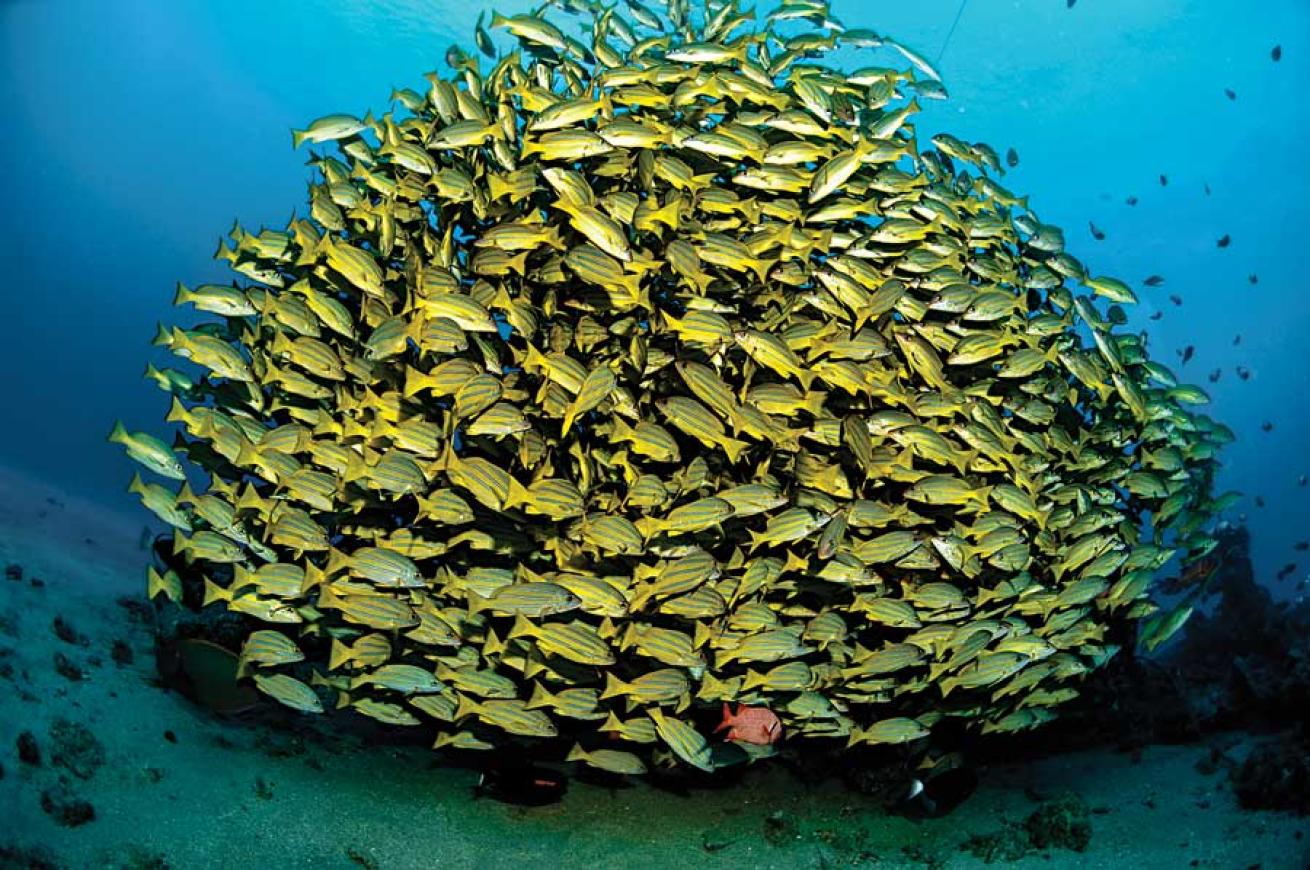
Ed RobinsonBlue-line snapper are often seen while scuba diving in Maui.
Mala Wharf
The remnants of the ruined Lahaina Pier, destroyed in 1992 by Hurricane Iniki, have created one of Maui’s best shore dives. With heaps of hiding spots for cool macro critters and napping green sea turtles, the train of coral-encrusted rubble is a local favorite thanks to prolific marine life and cool swim-throughs. Some dive-boat operators offer this spot as a night dive, which can be very exciting with hunting conger eels, octopuses and whitetip sharks. (Attempting the sketchy shore entry in darkness is ill-advised.) Readers listed a host of west-coast shore dives — from La Perouse Bay and Makena Landing in the south to Black Rock in the north — in voting the Valley Isle No. 1 in shore diving in its region.

Courtesy Mama's Fish HouseLocal fishermen have been delivering their catches daily to Mama’s Fish House since 1973. The converted beach house on the north shore offers cuisine rooted in traditional Polynesian flavors, and the setting is classic Hawaiiana.
Carthaginian II Wreck
The Carthaginian II was built in 1920 as a bulk carrier and sailed the Baltic Sea until 1973, when it was converted into a replica of a 19th-century whaling-supply vessel. The brig became a floating museum showcasing Maui’s whaling history, until it was scuttled in 2005 just south of Lahaina on the west side of Maui. Today, the steel-hulled fish magnet sits upright on the bottom in 95 feet of water, complete with a crew of resident frogfish that like to roost on them.
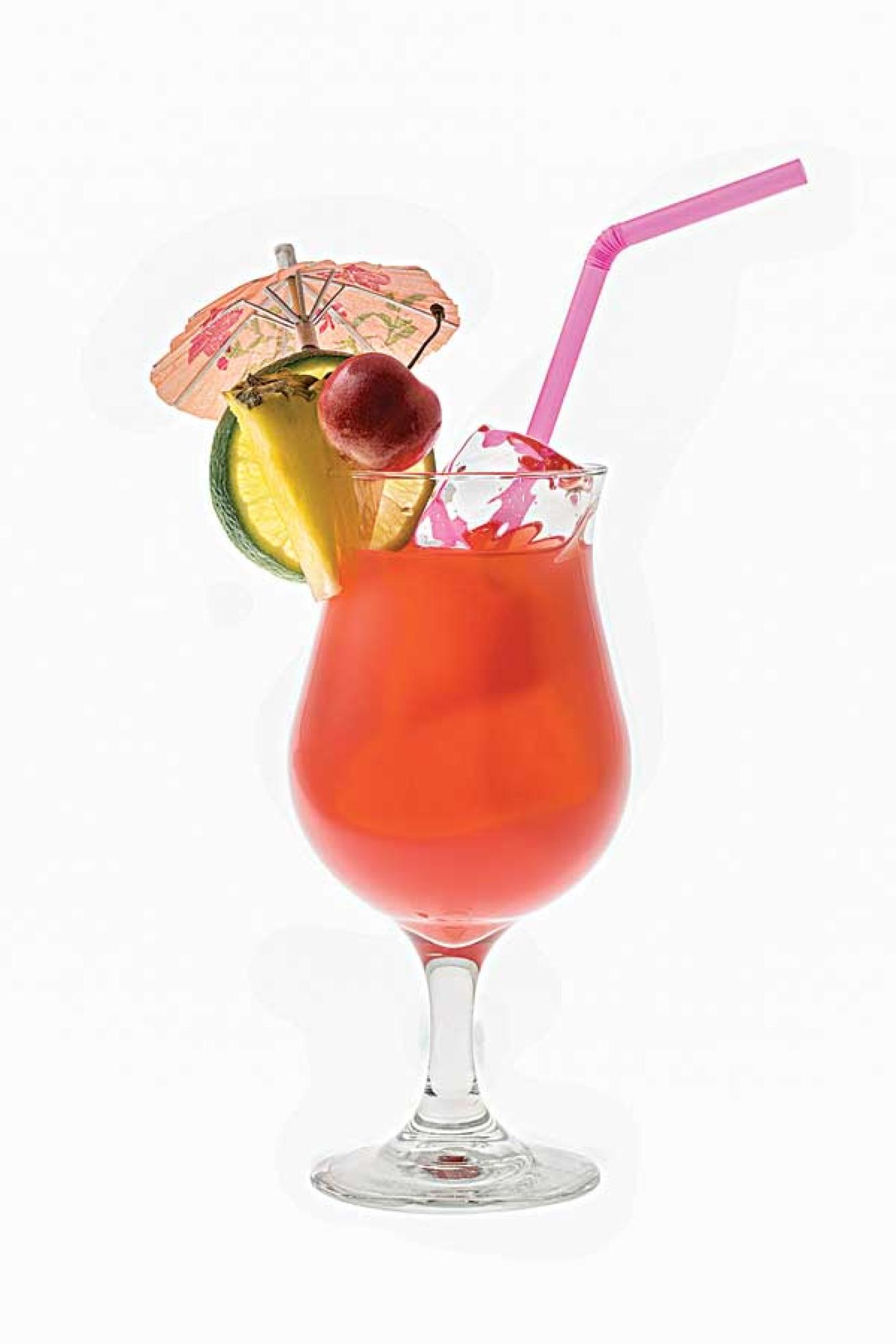
ShutterstockSteps from Lahaina Harbor marina, the bar at the historic Pioneer Inn is a relic from Maui’s turn-of-the-century whaling heritage. Having a mai tai or local lager among local fishermen is the perfect way to celebrate an epic Lanai dive adventure.
Heavenly Hana
Isolated on the wild east side of Maui by a winding two-lane road with more than 600 hairpin turns, the sleepy village of Hana is one of the most undisturbed havens on the island. Not a destination for diving, it’s the perfect place to off-gas by hiking to a hidden waterfall through a forest of bamboo, swimming in the Seven Sacred Pools of O’heo, and lazing on black-, green-, and red-sand beaches.
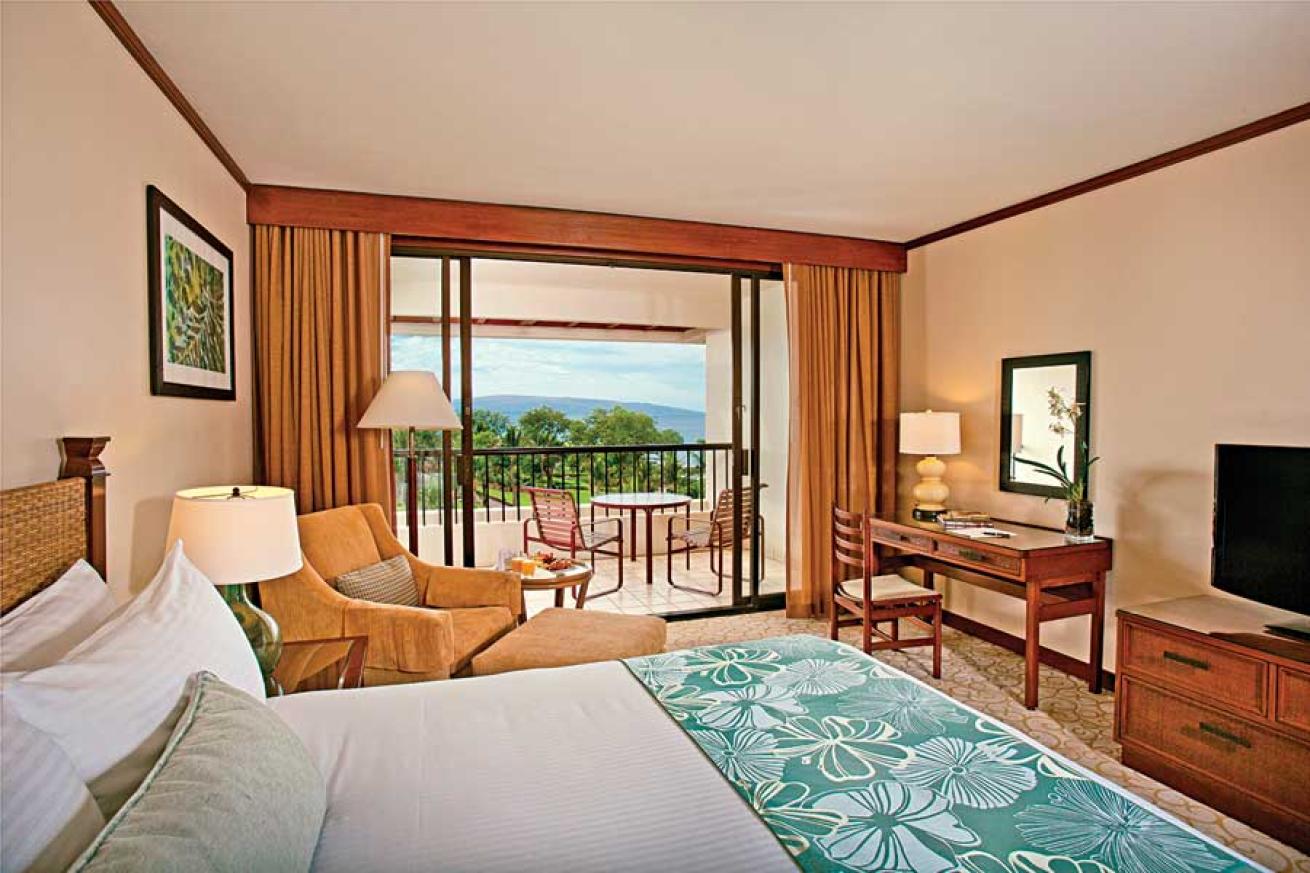
Courtesy Makena Beach ResortIn sunny South Maui, the Makena Beach Resort is a quiet and classy alternative to the mega resorts that proliferate in this area. It offers scenic views of the ocean and private lanais. It’s also close to the island’s best shore diving, and one of the few Maui hotels with an on-site dive center.
Molokini Back Wall
Molokini Crater is a geologic treasure, a picturesque submerged caldera filled with coral reefs that are a shallow, sunny haven for new divers. But our savvy readers know the real action is found around the backside of the 160-foot cliff, where a wall of volcanic rock drops more than 360 feet into the deep. Maui ranked in the top three of our Top 100 Readers Choice awards for best wall diving, no doubt in part because of this outstanding dive site. This advanced drift dive tours a vertical tapestry of cracks, caves and overhangs where octopuses, spiny lobsters and nudibranchs hide, along with whitetip sharks. But the main attraction is the chance to spot exotic passers-by, including manta rays, black-tip sharks, schooling jacks and the rare whale shark.
Endemic Fish life
This is the place for padding your fish life-list: Roughly one-quarter of the islands’ reef fish are found nowhere else on Earth, including Potter’s angelfish, milletseed butterflyfish and Hawaiian longfin anthias.
Humpback Whales
North Pacific humpback whales make their annual migration from Alaska to Hawaii each winter, and whale watching is especially good in the channels surrounding Maui. You might encounter a humpback during a dive, but it’s more likely you’ll only hear the haunting songs of these magnificent animals.
Need to Know:
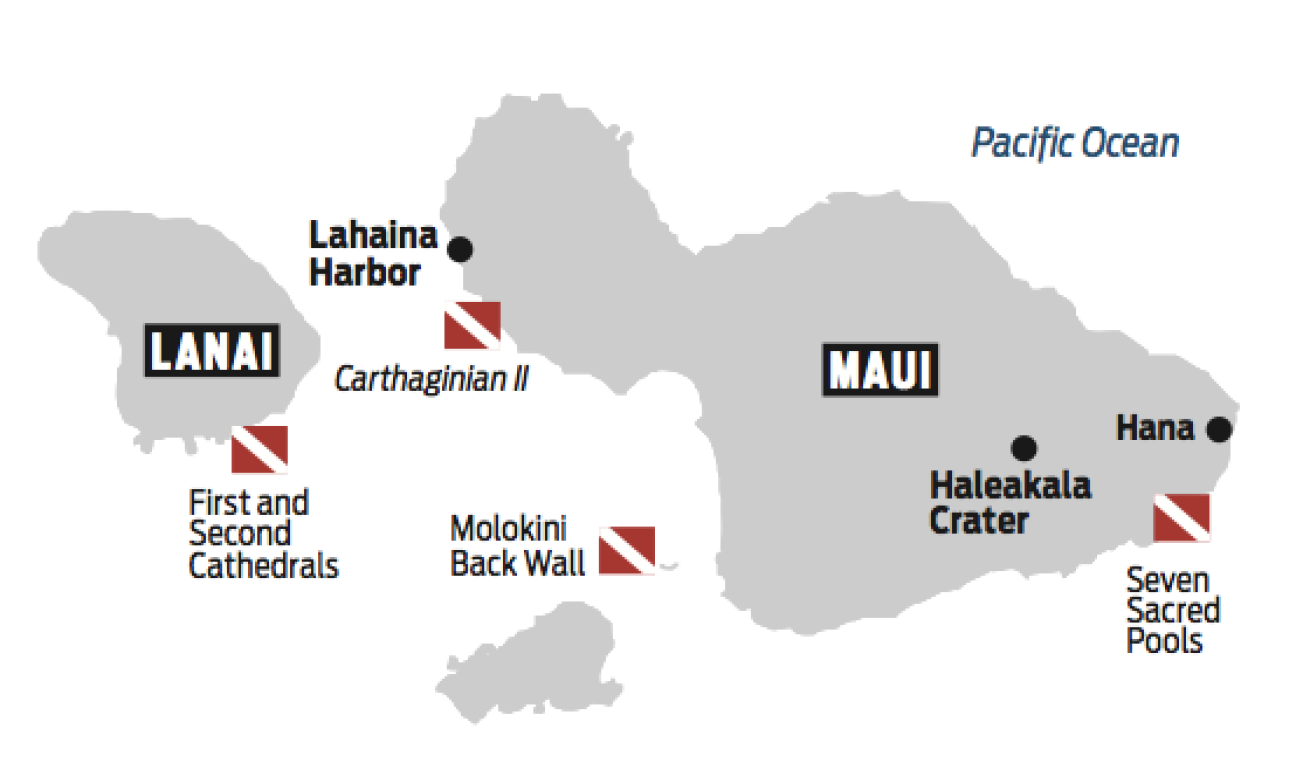
StaffMaui
When to Go: Maui diving is great year-round. Humpback whale season, when divers enjoy ever-present underwater whale song, is November through March. Water temperatures range from the mid-70s in winter to the low 80s in summer.
Travel Tip: To experience the best of Maui, it’s essential to have a personal rental car. An SUV with high ground clearance is an excellent resource to open some very interesting doors (namely, isolated shore diving).
Dive Conditions: Visibility can reach beyond 100 feet, but it also can be diminished by weather and tides at certain spots.


